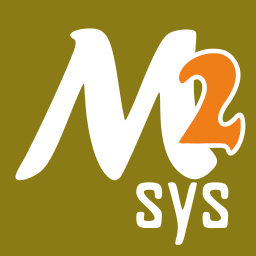Compiling on Windows¶
This guide covers the following:
Note: The BMDA guide defines the supported (but not only) way to build BMDA for Windows.
Building the firmware on a Windows machine¶
To build the firmware on Windows you will need the following minimum requirements:
The ARM GNU Toolchain compiler suite for bare metal
A POSIX-compliant shell such as Bash
Git for Windows, if building from the repository instead of a release
Meson >= 0.63 + Ninja to run the build system
The easiest way to get to a working setup is to use:
MSYS2 and follow the installation guide
Setting up the firmware build environment¶
Having installed MSYS2 and with the toolchain Zip file downloaded to the Downloads directory in your user profile area,
you will need to open the MSYS2 UCRT64 prompt from the start menu.
That is the prompt item with this icon: 
Inside the MSYS2 environment run the following to update the environment and follow all prompts provided:
pacman -Syu
pacman -S pactoys git unzip
pacboy -S python:p meson:p toolchain:p
unzip $USERPROFILE/Downloads/arm-gnu-toolchain-13.2.rel1-mingw-w64-i686-arm-none-eabi.zip -d .
export PATH=$HOME/arm-gnu-toolchain-13.2.rel1-mingw-w64-i686-arm-none-eabi/bin:$PATH
At this point you will have the tools required to build the firwmare and they will all be available from the shell.
It is important that all further steps be performed in this same shell, or if you do open a new one, that you
run the final line of this setup on each new shell you use (to get the firmware toolchain onto $PATH).
Acquiring the source¶
You have a choice at this point:
of either grabbing down a release from the project’s GitHub repositories, or
cloning the main repository.
From release Zip file¶
If you want to use a release, visit the project release index
and download the “Source code (zip)” entry’s file from the release’s assets, saving the file in your downloads as
blackmagic.zip.
You can then extract this file in a usable form by running:
unzip $USERPROFILE/Downloads/blackmagic.zip
This will make a directory of the source tree named following the release’s version string - for example,
for v1.10.0-rc0 the directory is named blackmagic-1.10.0-rc0. You will then need to change directory into this, eg:
cd blackmagic-1.10.0-rc0
From repository clone¶
If you wish to use a source clone, run the following to get set:
git clone https://github.com/blackmagic-debug/blackmagic
cd blackmagic
Building for a probe¶
Now you are in a copy of the source tree for BMD, you can build the source for your probe of choice. Use the platform README.md for the probe as a guide for any differences to the below steps.
NB: If you are building the firmware for a Blue Pill and your device does not fit one the descriptions of any in the
swlink platform, you must use the bluepill virtual platform which is a special configuration of the stlink platform.
To build the firmware and update your probe, assuming you’ve already acquired bmputil per the
upgrading instrucitons:
meson setup build --cross-file=cross-file/native.ini
cd build
ninja
ninja flash
The meson setup step will automatically clone and build any dependencies you are missing such as libopencm3,
or libusb. The resulting output of this step are 3 files:
build/blackmagic_native_firmware.elf- The firmware main binary w/ debug and address space informationbuild/blackmagic_native_firmware.bin- The firmware’s .text and .data sections objcopy’d into a bare filebuild/blackmagic.exe- Black Magic Debug App
Meson will skip building BMDA with the firmware if it cannot resolve one of the dependencies or is unable to build one of them.
If you need the bootloader (for example, to provision a new probe), additionally run ninja boot-bin to generate
two additional binaries:
build/blackmagic_native_bootloader.elf- The project’s bootloader w/ debug and address space informationbuild/blackmagic_native_bootloader.bin- The project bootloader’s .text and .data sections in a bare file
When the upgrade step completes, your probe will be automatically rebooted into the new firmware and be ready to go.
Building BMDA on a Windows machine¶
To build BMDA on Windows you will need a MSYS2 environment - please go to the MSYS2 project and follow the installation guide.
Setting up the build environment¶
Having installed MSYS2, you will need to open the MSYS2 UCRT64 prompt from the start menu.
That is the prompt item with this icon: 
Inside the MSYS2 environment run the following to update the environment and follow all prompts provided:
pacman -Syu
pacman -S pactoys git unzip
pacboy -S meson:p toolchain:p
At this point you will have everything needed to build BMDA in the UCRT64 environment.
Building BMDA¶
With the environment set up, you will need to acquire the source same as in the firmware build steps above. Once you have the source, building BMDA is as easy as running:
meson setup build
meson compile -C build
This will build a full BMDA that understands how to talk with all supported probe types.
After the build step, you will have a file - build/blackmagic.exe, you can execute this by running
build/blackmagic. This is the BMDA binary.
If you do not want to have to use an MSYS2 environment to use blackmagic.exe, you can now copy the
following files into the build directory to make it usable from anywhere on the command line or via a shortcut:
cp /ucrt64/bin/libusb-1.0.dll build
cp /ucrt64/bin/libhidapi-0.dll build
Note: The file paths above assume you are still in the MSYS2 UCRT64 environment at the project source root.
Now you can run c:\path\to\project\blackmagic from the Windows commandline or shortcut.